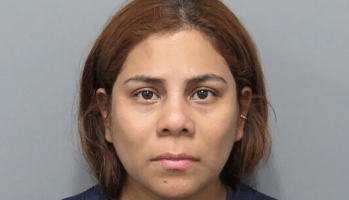Will there be enough primary care doctors to treat the millions of new insured patients estimated to enter the country’s medical system over the next several years?
Family care or general practice doctors have been in short supply in recent years. The American Academy of Family Physicians recently predicted a shortfall of 40,000 primary-care providers by 2020.
Dr. George Kikano, chairman of family medicine at Case Western Reserve University’s medical school, says there is plenty of reason for concern. He points to what happened in Massachusetts, after that state passed a new health care reform law in 2006 that requires nearly every residents to have insurance (it also provides free or partially-subsidized health care for many). Today, 96 percent of the state’s residents have health care coverage.
For many patients, Kikano says, “The average wait time [for non-urgent care] to see a primary care physician there is now 90 days.”
Part of the reason medical residents are less likely to go into family practice, Kikano says, is that most of them face huge debts after medical school, and they know they can make up to twice as much as a specialist. Also, doctors with a specialty practice can have more predictable schedules than general practitioners.
Kikano said “someone who I know well,” who he prefers not to identify, had a one-on-one conversation with President Barack Obama in the White House two weeks ago to discuss the huge, looming problem of not enough family care doctors.
“The president told him, “Yes, this is what we need to attack next,'” says Kikano, who adds that we can expect more details in the next few months about how the problem may be tackled.
For now, the new law calls for appropriations over a five-year period for training programs, scholarships and loan repayments for medical students opting to go into family medicine.
The health care reform legislation also will allow for $1 billion expansion of the government-salaried National Health Service Corps. That organization includes primary care doctors, as well as nurse practitioners and physician’s assistants, who receive loan repayments or scholarships that subsidize the cost of their medical education — if they go to work for a time in regions underserved by doctors and nurses.
But, as Kikano says, “You need people to apply for it.”
Another incentive the law provides — from 2011 to 2015 — is a 10 percent premium payment from Medicare to primary care physicians and to general surgeons who are practicing in health professional shortage areas.
Melinda Abrams, an assistant vice president of the non-partisan, non-profit, Commonwealth Fund, agrees that having a sufficient supply of primary care doctors is definitely a concern.
“Only 2 percent of medical students are choosing careers in primary care,” she says.
Besides the 10 percent Medicare bonus, she notes, “Health care reform includes many provisions to increase and retain the primary care workforce — for example, unused residency slots will be dedicated to primary care.”
Thomas F. Zenty III, chief executive officer of University Hospitals (University Hospitals Case Medical Center is the primary affiliate of Case Western Reserve University School of Medicine) said his organization also will be focusing on graduate medical education in primary care.
“When it is clearly defined how doctors providing primary care under health care reform will be paid, we’ll see medical students taking more of an interest in this area.”















